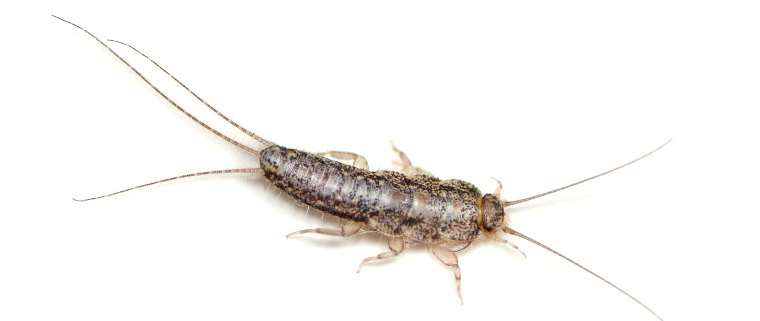Silverfish (Lepisma saccharina) is a small, wingless insect belonging to the order Thysunara. Its name was derived from its silvery light grey and blue colour along with its fish-like movements. These insects are very hard to see as they move very quickly. Their diet consist of carbohydrates such as starches and sugar
While these nocturnal insects don’t bite, they are seen as awful-looking nuisance that can possibly destroy your belongings. The most effective way of eradicating these insects is to raid them at the source. Question is, can you find their source? Don’t fret. There are lots of options that you can try to get rid of them, and they don’t even have to be highly toxic.
Pyrethrin – Although known as a chemical pesticide, pyrethrin is considered to be less toxic and it is biodegradable as it is made from the pyrethrum plant seeds. You can never really say that it is safe, given that it is a pesticide, but this might be a more ideal option compared to harsher chemicals. You can apply it on crevices and areas where the silverfish is usually found, such as in bookshelves and closets.
Boric Acid – This is, by far, the most popular silverfish control product. One of the things that make boric acid a popular choice is that it is considerably low on the toxicity scale. Boric acid is often stocked among ready-to-use products such as baits, wafers and traps. Sprinkle the powder on areas where the silverfish is usually active.
Jar Traps – If you are up to some DIY silverfish traps, then you should make this one. Cover the outside of a glass jar with masking tape, then put something starchy (preferably crackers) in the bottom of the jar to serve as bait. The silverfish will crawl in but wouldn’t be able to get out.
Diatomaceous Earth – It is a crumbly, porous sedimentary deposit made out of the shells of microscopic sea diatoms. It is lethal to many insects as it penetrates their exoskeletons, thus dehydrating them. Sprinkle it in crevices, but be careful not to put it in areas where pets and children can get close enough to breathe it.
Now, you don’t just put these pesticides anywhere you like. Make sure they are applied strategically to your target areas such as:
- Cabinet tops
- Being electrical outlets
- Bookshelves
- Boxes and file cabinets
- Holes where water pipes enter walls
- Baseboards
- Behind siding and within walls
- Behind appliances
Prevention is always better than cure, so before these pests invite themselves into your home, stop them in their tracks. Here are a few prevention tips:
Get rid of food sources
Silverfish live off starches and sugars. These can be found in paper, cardboard boxes, glue and many other stuff. Silverfish tend to hang around where these food sources are, so make sure you use airtight containers to store your papers in. If you find anything that has been gnawed on or infested by these insects, it’s best to just throw it away.
Vacuum all corners and crevices
Silverfish eggs are hidden and hatch in cracks and crevices. Vacuum every small cracks you find and dispose of the vacuum cleaner bag in a tight trash bin outside so they could not crawl back in.
Fix leaks and damp spots
A damp and humid environment is enticing to silverfish. Fix leaky taps, damp basements and water condensation.






